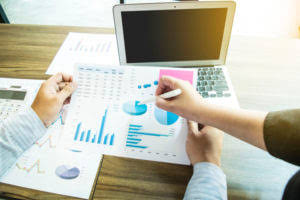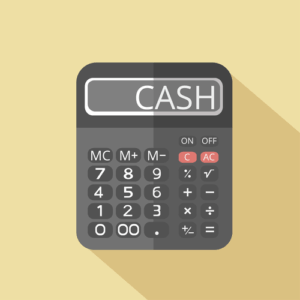Content

Current Liabilities – The debts of a company which are due and payable within the next 12 months. Accounts payable is the amount you may owe any suppliers or other creditors for services or goods that you have received but not yet paid for. This Business Builder assumes that you are familiar with depreciation and have already selected a depreciation method and are comfortable with its application. If you are not familiar with depreciation, you can still prepare a balance sheet. It will provide you with similar benefits, but it will not be in conformance with GAAP.

Examples of assets include cash accounts, cash equivalents, accounts receivable, inventory, furniture, and stock. Balance sheet totals can also be used when performing any kind of accounting calculations such as accounting ratios or creating projections for your business. You’ll also find fixed costs such as loans and notes payable on a balance sheet. Because it summarizes a business’s finances, the balance sheet is also sometimes called the statement of financial position. Companies usually prepare one at the end of a reporting period, such as a month, quarter, or year.
Shareholders’ Equity
These are typically cash, accounts receivable, inventory, and short-term investments. On the other hand, Fixed or Long-Term Assets are harder to convert into currency. These could be Real Properties, Office Equipment, Long-term investments, and more. Your company’s accounts payable refers to short-term debts, such as amounts owed to suppliers for items bought on credit. A balance sheet keeps track of a company’s assets and liabilities and provides insight into the current financial state of a company.
- However, after you begin using the accounting concepts defined in this Business Builder and associating them with your business, a familiarity with them is sure to develop.
- Add Liabilities and Stockholder’s account together to get the amount equal to total assets.
- Our excel template summarizes assets, liabilities, and equity to easily compare your company’s value over time.
- QuickBooks Online is the browser-based version of the popular desktop accounting application.
Of course, the adequacy of a current ratio will depend on the nature of the small business and the character of the current assets and current liabilities. While there is usually little doubt about debts that are due, there can be considerable doubt about the quality of accounts receivable or the cash value of inventory. Financial statements tell you and others the state of your business. The three most commonly prepared financial statements for a small business are a balance sheet, an income statement, and a cash flow statement.
How To Use Excel For Gaap Accounting
Add your current and fixed asset totals to arrive at your assets total. The assets on your balance sheet should always balance with the total of your company’s liabilities plus equity.
The balance sheet can help you easily identify patterns, especially in accounts receivable and accounts payable. A balance sheet will show you the assets, liabilities and equity of a company.

In the case of Billy’s Burger Joint, we saw how the cost of labor and ingredients affected one another on the profit and loss statement. Long term liabilities aren’t that common in restaurants, but if they apply to your restaurant make sure to include them in your balance sheet. Overall, maintaining a restaurant balance sheet allows you to simultaneously verify the accuracy of a profit and loss statement while getting a more holistic view of the restaurant’s financial health.
Working Capital Items
As such, we will have to break down the account more granularly to make the current year’s net income appear clearer. This is whatever will remain if you subtract the liabilities of the company from the assets. Exactly how the equity is made up will vary from company to company, depending on the business type and stage. Non-current, or long-term, assets, include investments and other less tangible assets which nonetheless can bring value to your business. Take a look at these examples to give you an idea of what to include.
Like real estate and utilities, capital-intensive businesses typically get higher average debt ratio values than service industry-based companies. You can use the values you find in the balance sheet to look at its financial ratios.

Return on Assets is a type of return on investment metric that measures the profitability of a business in relation to its total assets. This account may or may not be lumped together with the above account, Current Debt. While they may seem similar, the current portion of long-term debt is specifically the portion due within this year of a piece of debt that has a maturity of more than one year. For example, if a company takes on a bank loan to be paid off in 5-years, this account will include the portion of that loan due in the next year. Owner’s Equity, on the other hand, refers to the amount the owners raised for the business, plus any earning it retains in its accounts. These values in these two sections should equal the amount noted under assets—hence the term Balance Sheet. Balance sheets are fundamental financial statements for both accounting and financial modeling within an organization.
The balance sheet should conclude with two columns with corresponding figures at the bottom. In all cases, net Program Fees must be paid in full to complete registration. We also allow you to split your payment across 2 separate credit card transactions or send a payment link email to another person on your behalf. If splitting your payment into 2 transactions, a minimum payment of $350 is required for the first transaction. Companies that report on an annual basis will often use December 31st as their reporting date, though they can choose any date.
Our priority at The Blueprint is helping businesses find the best solutions to improve their bottom lines and make owners smarter, happier, and richer. That’s why our editorial opinions and reviews are ours alone and aren’t inspired, endorsed, or sponsored by an advertiser.
Create A Section For Liabilities
Using a balance sheet template will streamline the next step of the process, so that you don’t have to manually insert all of the fields yourself. This is a vital step towards understanding the core strength of a company, and to assess the business performance. The balance sheet tells you what your business owns and what it owes to others on a specific date.
If you are a manufacturing firm, this could be your largest fixed asset. Like the other fixed assets on the balance sheet, machinery and equipment will be valued at the original cost minus depreciation. Many small businesses may not own a large amount of fixed assets. This is because most small businesses are started with a minimum of capital. Of course, fixed assets will vary considerably and depend on the business type , size and market. A balance sheet provides a snapshot of a business’ health at a point in time. Balance sheets are usually prepared at the close of an accounting period such as month-end, quarter-end, or year-end.
The Five Different Types Of Accounts
Additional resources for managing your practice finances will appear in future issues of the PracticeUpdate E-Newsletter and on APApractice.org. With balance sheet data, you can evaluate factors such as your ability to meet financial obligations and how effectively you use credit to finance your operations . Remember —the left side of your balance sheet must equal the right side (liabilities + owners’ equity). Understanding the different types of financial documents and the information each contains helps you better understand your financial position and make more informed decisions about your practice. This article is the first in a series designed to assist you with making sense of your practice’s financial statements.
Appointment Scheduling Taking into consideration things such as user-friendliness and customizability, we’ve rounded up our 10 favorite appointment schedulers, fit for a variety of business needs. CMS A content management system software allows you to publish content, create a user-friendly web experience, and manage your audience lifecycle. We connect your business with a personal bookkeeper who will help you connect your bank and credit card accounts to our platform to reconcile your transactions. No more time intensive admin tasks, just immediate access to the information you need to understand your business’s financial health.
For example, an investor starts a company and seeds it with $10M. Cash rises How to Make a Balance Sheet by $10M, and Share Capital rises by $10M, balancing out the balance sheet.
How To Prepare A Balance Sheet: 5 Steps For Beginners
Sage 50cloud is a feature-rich accounting platform with tools for sales tracking, reporting, invoicing and payment processing and vendor, customer and employee management. By far, the easiest, and most https://www.bookstime.com/ accurate way to produce a balance sheet is to use accounting software. By tracking all of your transactions in your accounting software application, you can have an accurate balance sheet in seconds.
The amount of equity is increased by income earned during the year, or by the issuance of new equity. The amount of equity is decreased by losses, by dividend payments, or by share repurchases.
In the next section, 4 simple formulas will be introduced to enhance the information contained on the balance sheet. Motor vehicles is a line item to list the original value of any motor vehicle, such as a delivery truck, that is owned by your business. Department of Housing and Urban Development to provide consumer housing counseling.
How To Create A Balance Sheet With Examples And Tips
Our payments solutions give your customers the flexibility to make purchases however they choose with added security to protect their accounts. Find a variety of financing options including SBA loans, commercial financing and a business line of credit to invest in the future of your business. Chase offers a wide variety of business checking accounts for small, mid-sized and large businesses. Compare our business checking solutions chart to select exactly which checking account is right for you. Lastly, you can compare your total to the one listed on your company’s general ledger to ensure there are no discrepancies. The typical naming convention includes the words “Balance Sheet” with your company name and the date for the end of the fiscal year or quarter underneath.
When a business records an expense, its assets will decrease or its liabilities will increase. Balance sheets are financial statements that show a company’s assets, liabilities, and equity at any given time. Make sure you have all the necessary documents available to fill in your balance sheet. Gather all transactions, invoices and financial statements related to the period of time you wish to review.
As with assets, liabilities can be classified as either current liabilities or non-current liabilities. A liability is anything a company or organization owes to a debtor. This may refer to payroll expenses, rent and utility payments, debt payments, money owed to suppliers, taxes, or bonds payable.
As a result, the ROA helps investors determine how well the company is using that capital investment to generate earnings. If a company’s management team has invested poorly with its asset purchases, it’ll show up in the ROA metric. It’s important for investors to compare the fixed asset turnover rates over several periods since companies will likely upgrade and add new equipment over time.